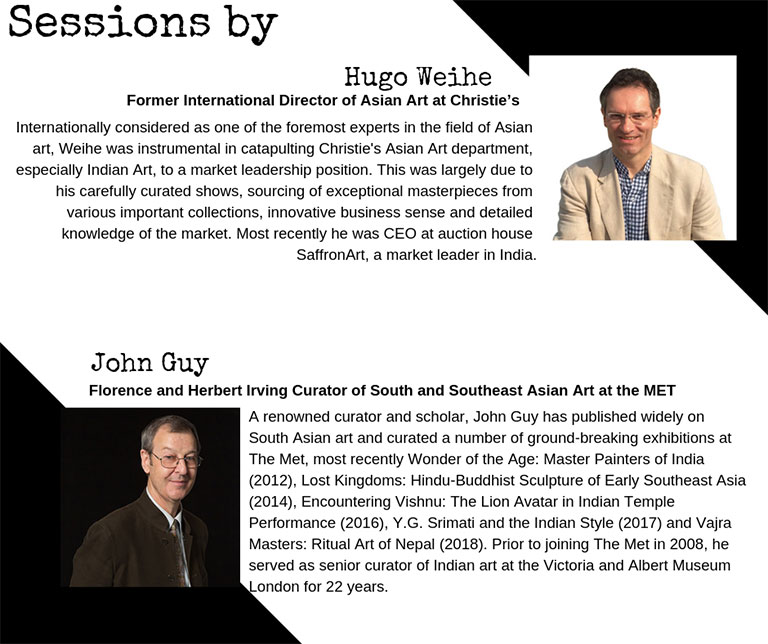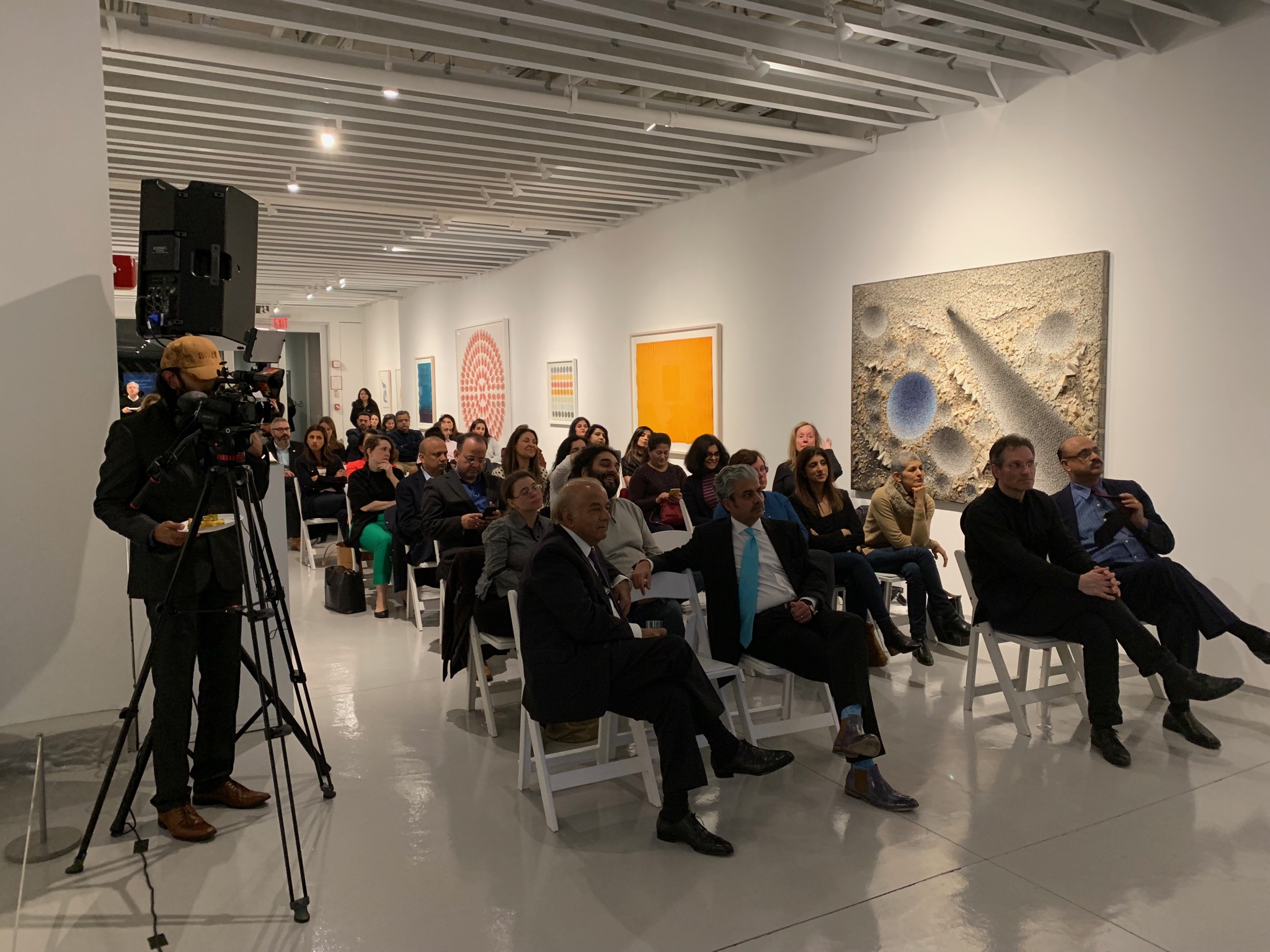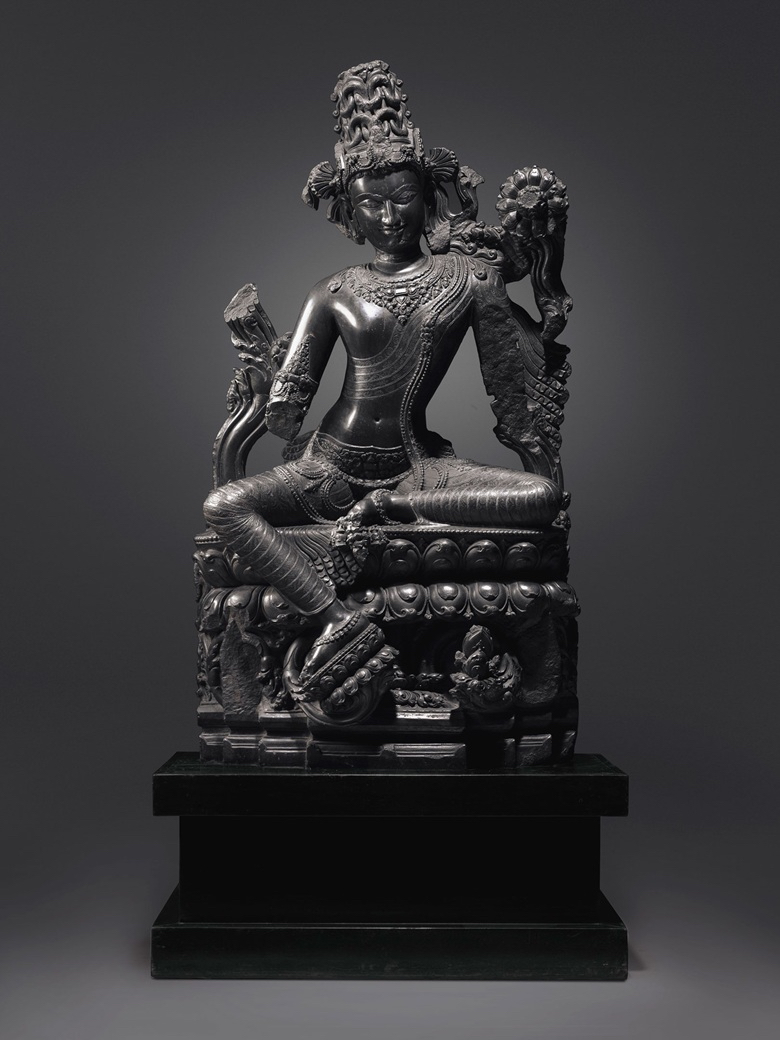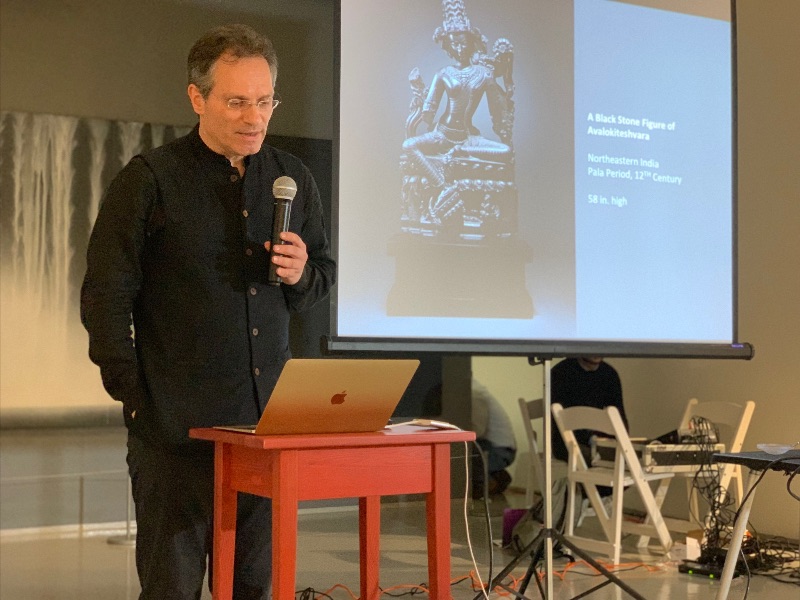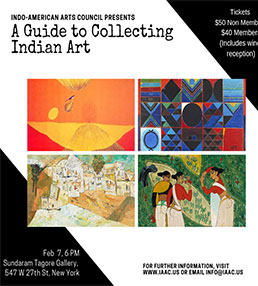
A Guide To Collecting Indian Art: By Hugo Weihe And John Guy
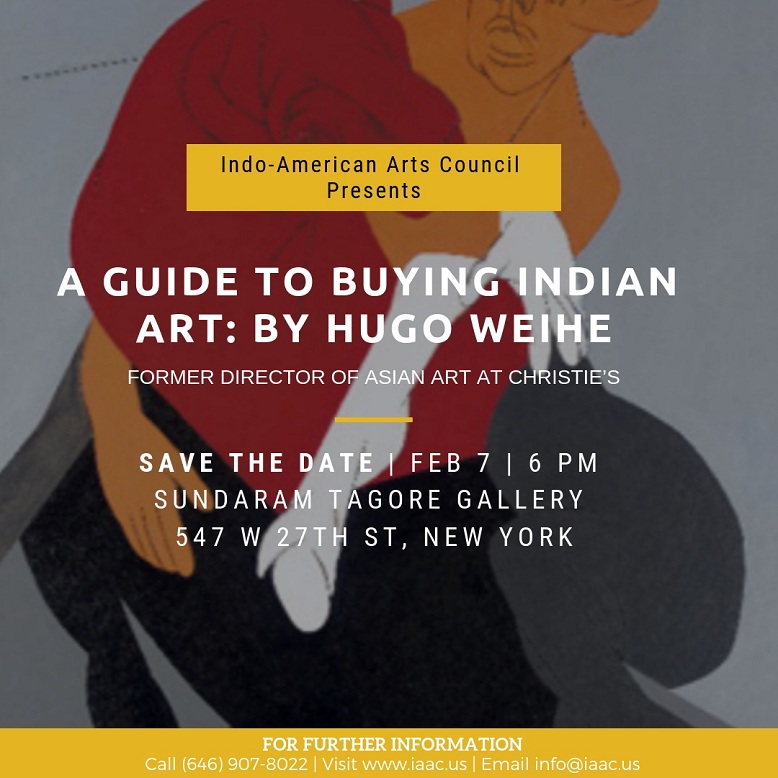
FOR IMMEDIATE RELEASE NEW YORK, February 12, 2019
Experts weigh in on Affordable Indian Art at IAAC event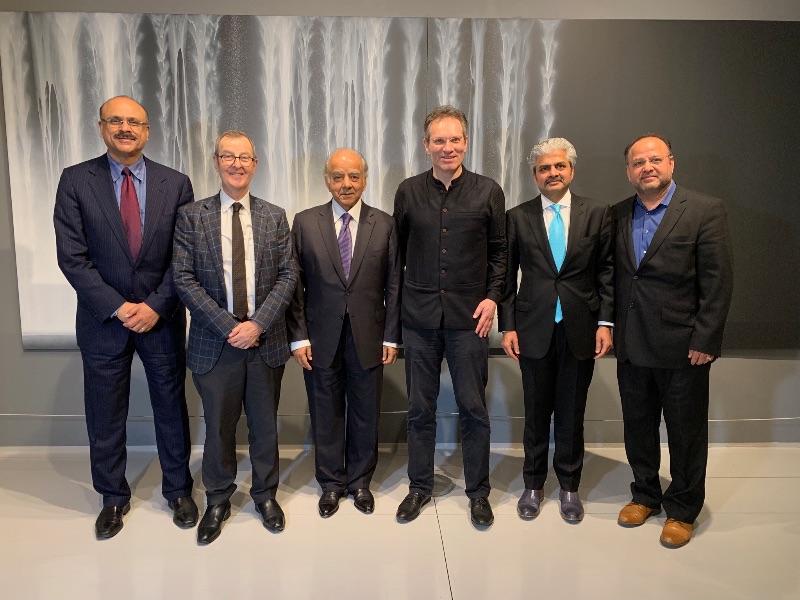
From left to right: IAAC Board Member Rakesh Kaul, MET Museum Curator John Guy, IAAC Chairman Dr.Nirmal Mattoo, ex Christie's Director Hugo Weihe, IAAC Board Member Rajeev Kaul and IAAC Executive Director Sunil Hali
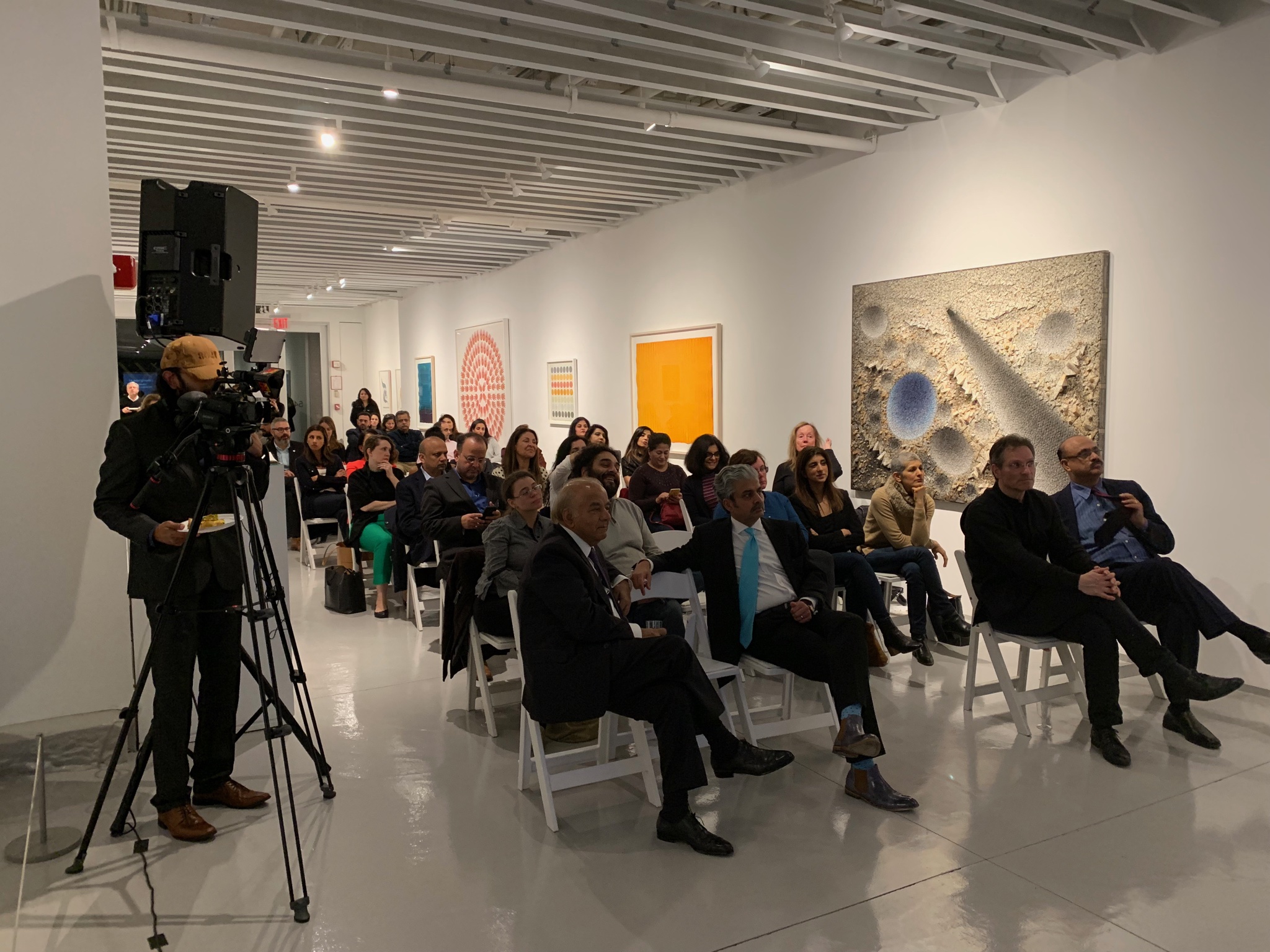
The IAAC gathering at the event at Sundaram Tagore Gallery in New York City

A large and important black stone figure of Lokanatha (Avalokiteshvara), northeastern India, Pala period, 12th century. 58 inches (147.4 cm) high. Sold for $24,663,500 in Himalayan, Indian and South East Asian Art at Christie's in New York.
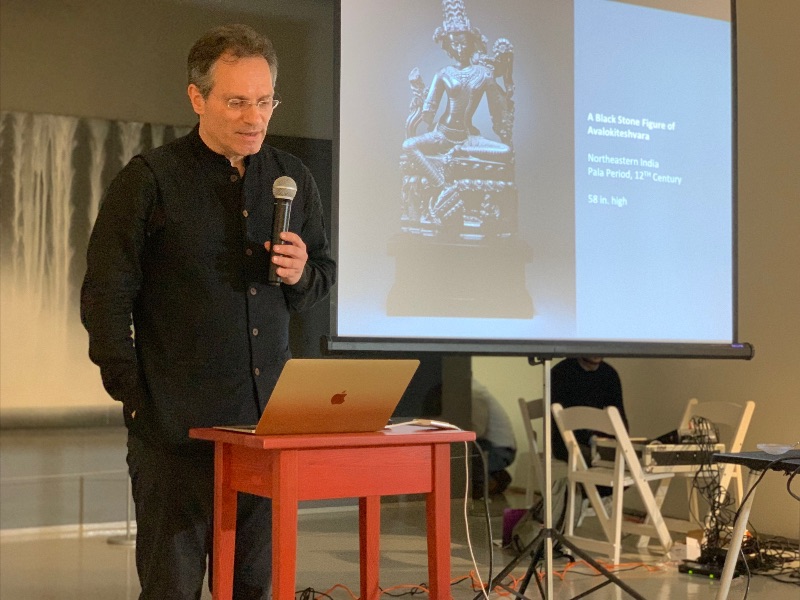
Hugo Weihe speaks about the Pala period sculpture that sold for a record making price in 2017.
TUESDAY, FEB 12
(New York City, NY) - The Indo-American Arts Council (IAAC) presented a unique art talk by former International Director of Asian Art at Christie's, Hugo Weihe and MET Museum Curator of South and Southeast Asian Art, John Guy on Thursday Feb 7 at the Sundaram Tagore Gallery in New York City. The engaging discussion centered around the key factors to take into consideration while collecting Indian art both at an individual and also at an institution level.
The evening was kicked off with an address by IAAC board member Rajeev Kaul, who spoke of his long association with Hugo Weihe. Post that, Chairman Dr. Nirmal Mattoo welcomed the speakers and also later moderated the post session Q&A. The first session during which Hugo Weihe took to the floor was an eye opener to the audience as he brought up many interesting case studies of Indian art acquired by private collectors the world over. One such exemplary case was of a sculpture retrieved from Pompeii, which spoke volumes about the trade between Italy and India even during Roman times. Hugo also spoke about Gaitonde, considered one of India's greatest abstract painters, whose paintings were acquired by Swiss collectors in the 60s and of prominent art collectors in India. He stressed that Indian art could still be acquired at lower price points compared to other cultures and he encouraged the gathering to actively collect Indian art.
The next session was by John Guy, Florence and Herbert Irving Curator of the Arts of South and Southeast Asia of the Met, who recently came back from India. Speaking on the occasion, he said "We will celebrate the 150th anniversary of the Met in 2020. We are going to have a series of programmes and exhibitions to commemorate the occasion. One of the exhibitions will have a Buddhist theme" He was recently in India to select the different objects that can be borrowed from India for the exhibition titled 'Tree and the Serpent: Early Buddhist Art of Southern India'. Some of the other museums in India from where the Met will borrow artefacts include the Archaeological Survey of India, Telangana Museum, Patna Museum and National Museum.
John spoke of institutional buying of Indian art and also provided many fascinating anecdotes and incidents relating to the acquisitions and exhibits from the Y.G. Srimati and Vajra Masters exhibitions held at the MET recently.
One of the highlights of the evening was a life-size figure of a Buddhist deity - which sold for $24,663,500 in New York, setting a new world record for a South Asian work of art. Both Hugo and John spoke of the 900-year-old figure from northeastern India which was carved remarkably, from a single piece of black stone. It was part of the record-breaking Asian Art Week sales at Christie's in New York in 2017. Made in the 12th century, the figure dated to the late Pala period, an era that saw the production of some of the finest sculpture ever made on the subcontinent, which is now highly sought-after by collectors. Held in a private European collection since 1976, the sculpture has been unseen for 40 years. Prior to that, the work formed the foundation of one of the first collections of Indian art in America, established at Boston's Museum of Fine Arts in 1922 by the pioneering curator Ananda Coomaraswamy.
The sessions were followed by an open interactive discussion between the audience and the speakers with Dr.Mattoo moderating it. The evening ended with a vote of thanks and a private dinner with the guests.
Hugo Weihe Former International Director of Asian Art at Christie's
Internationally considered as one of the foremost experts in the field of Asian art, Weihe was instrumental in catapulting Christie's Asian Art department, especially Indian Art, to a market leadership position. This was largely due to his carefully curated shows, sourcing of exceptional masterpieces from various important collections, innovative business sense and detailed knowledge of the market. Most recently he was CEO at auction house SaffronArt, a market leader in India.
John Guy Florence and Herbert Irving Curator of South and Southeast Asian Art at the MET
A renowned curator and scholar, John Guy has published widely on South Asian art and curated a number of ground-breaking exhibitions at The Met, most recently Wonder of the Age: Master Painters of India (2012), Lost Kingdoms: Hindu-Buddhist Sculpture of Early Southeast Asia (2014), Encountering Vishnu: The Lion Avatar in Indian Temple Performance (2016), Y.G. Srimati and the Indian Style (2017) and Vajra Masters: Ritual Art of Nepal (2018). Prior to joining The Met in 2008, he served as senior curator of Indian art at the Victoria and Albert Museum London for 22 years.
ABOUT INDO-AMERICAN ARTS COUNCIL: The IAAC supports all the artistic disciplines in classical, fusion, folk and innovative forms influenced by the arts of India. We work cooperatively with colleagues around the United States to broaden our collective audiences and to create a network for shared information, resources and funding. Our focus is to help artists and art organizations in North America as well as to facilitate artists from India to exhibit, perform and produce their work here. The IAAC is a 501(c)(3) tax-exempt organization. All donations are tax-deductible to the fullest extent allowable by law.For information please visit www.IAAC.us
Indo-American Arts Council Inc. 303 Fifth Avenue, Suite 1007, New York, NY 10016. Phone: 212 594 3685, Fax: 212 594 8476 Email: admin@IAAC.us Web: www.IAAC.us
###
END
For Hi-Res pictures with captions, please contact Suman Gollamudi at suman.gn@iaac.us
PRESS RELEASE Contact: Suman Gollamudi Publicist, Indo-American Arts Council 917-623-9604 suman.gn@iaac.us
For Immediate Release: Jan 14 2019, New York City
GUIDE TO COLLECTING INDIAN ARTHUGO WEIHE, former Director of Asian Art at Christie’s & JOHN GUY, Met Museum Curator of South Asian Art in a joint collaboration.
MONDAY, JAN 14
(New York City, NY) – The Indo-American Arts Council (IAAC) is pleased to present a unique art talk by former International Director of Asian Art at Christie's, Hugo Weihe and MET Museum Curator of South and Southeast Asian Art, John Guy on Thursday Feb 7 at 6PM. The discussion will explore the key factors to take into consideration while collecting Indian art both at an individual and also at an institution level. This will be an interactive session and there will be ample opportunity to converse with the speakers.
The talk will take place at the Sundaram Tagore Gallery, 547 W 27th St, New York and includes a private wine reception. General admission tickets are $50. Member pricing is at $40. Art lovers will be able to network with others who share their passion. Tickets may be purchased through IAAC's website: www.iaac.us or through eventbrite at https://bit.ly/ArtTalkJan19.
Hugo Weihe Former International Director of Asian Art at Christie's Internationally considered as one of the foremost experts in the field of Asian art, Weihe was instrumental in catapulting Christie's Asian Art department, especially Indian Art, to a market leadership position. This was largely due to his carefully curated shows, sourcing of exceptional masterpieces from various important collections, innovative business sense and detailed knowledge of the market. Most recently he was CEO at auction house SaffronArt, a market leader in India.
John Guy Florence and Herbert Irving Curator of South and Southeast Asian Art at the MET A renowned curator and scholar, John Guy has published widely on South Asian art and curated a number of ground-breaking exhibitions at The Met, most recently Wonder of the Age: Master Painters of India (2012), Lost Kingdoms: Hindu-Buddhist Sculpture of Early Southeast Asia (2014), Encountering Vishnu: The Lion Avatar in Indian Temple Performance (2016), Y.G. Srimati and the Indian Style (2017) and Vajra Masters: Ritual Art of Nepal (2018). Prior to joining The Met in 2008, he served as senior curator of Indian art at the Victoria and Albert Museum London for 22 years.
Press is invited to interview the speakers during the reception at Sundaram Tagore Gallery. Must RSVP to suman.gn@iaac.us. Press check-in by 5PM.
ABOUT INDO-AMERICAN ARTS COUNCIL: The IAAC supports all the artistic disciplines in classical, fusion, folk and innovative forms influenced by the arts of India. We work cooperatively with colleagues around the United States to broaden our collective audiences and to create a network for shared information, resources and funding. Our focus is to help artists and art organizations in North America as well as to facilitate artists from India to exhibit, perform and produce their work here. The IAAC is a 501(c)(3) tax-exempt organization. All donations are tax-deductible to the fullest extent allowable by law. For information please visit www.iaac.us.
© Indo-American Arts Council Inc. 303 Fifth Avenue, Suite 1007, New York, NY 10016. Phone: 212 951 7395 Email: admin@iaac.us Web: www.iaac.us
###
END
Video 1
Video 2
Video 3
Video 4
Video 5
Thank you Video


